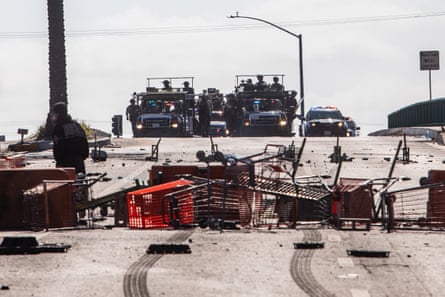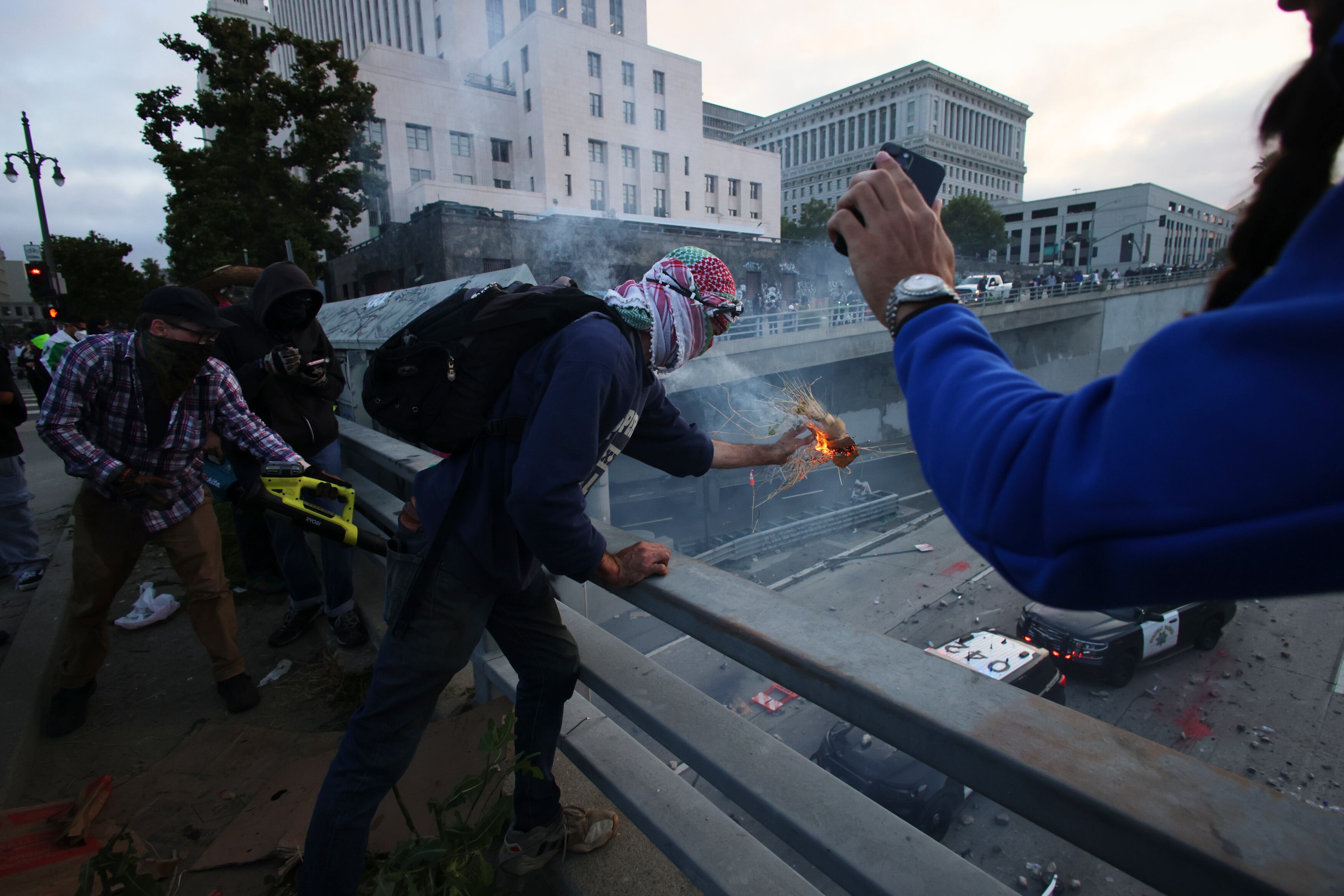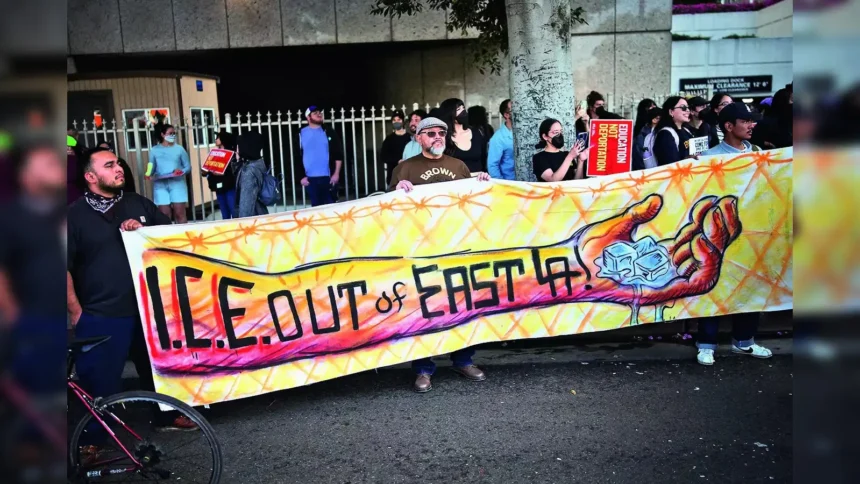Introduction
In the latest escalation of federal power, President Donald Trump has ordered the deployment of 700 active-duty Marines and over 4,000 National Guard troops to Los Angeles in response to intensifying protests against federal immigration sweeps. The move has triggered a fierce legal backlash from California officials and sparked alarm among civil rights advocates across the nation.
Why Trump Sent Troops to Los Angeles

On June 9, 2025, massive protests erupted in downtown Los Angeles after ICE agents carried out aggressive raids in Latino-majority neighborhoods. Demonstrators chanted “No human is illegal,” while waving sunflowers and blocking major intersections. As tensions flared, Trump authorized a rare use of active-duty military personnel on domestic soil, citing the need to protect federal assets and restore order.
- Initial deployment: 1,000 National Guard members were already on the ground by midday Monday.
- Expanded deployment: Later that evening, Trump ordered an additional 2,000 National Guard troops, raising the total to over 4,100.
- Marine support: 700 active-duty Marines from southern California bases are being deployed to supplement the Guard.
Legal Blowback from California

The response from California was swift and severe. Attorney General Rob Bonta filed a federal lawsuit in San Francisco, calling the deployment “unlawful and a violation of state sovereignty.” Governor Gavin Newsom echoed the sentiment, stating on social media, “We’re standing together to clean Trump’s mess and protect our people.”
The lawsuit names President Trump, Defense Secretary Pete Hegseth, and the Department of Defense as defendants, arguing that the President lacked constitutional authority to override the state’s command of its National Guard. Meanwhile, LA Mayor Karen Bass accused the federal government of using the city as an “experiment” in militarized immigration enforcement.
How the Military Is Preparing for Urban Protests
The Pentagon is currently drafting guidelines for Marines deployed in LA. According to unnamed US officials, the rules will allow Marines to:
- Support federal agencies in protecting personnel and property
- Temporarily detain civilians if necessary for safety until police take over
- Use minimal force and avoid direct confrontation without law enforcement presence
However, local police are not aligned. LAPD Chief Jim McDonnell publicly stated that the department had received no “formal notification” about the arrival of military forces. This lack of coordination is fueling concerns about operational confusion and potential violations of civil liberties.
Public Reactions and Social Media Footage

Videos on X (formerly Twitter) showed convoys of sheriff’s vehicles in tactical gear alongside armored trucks rolling into protest zones. One viral clip claims “dozens of LA Sheriffs just rolled up with full tactical gear preparing for more riots.” Human rights groups, including the ACLU, warned this could lead to “federal overreach and unconstitutional detentions.”
Conclusion
The situation in Los Angeles is a flashpoint in the national debate over immigration, executive authority, and the militarization of American cities. As lawsuits fly and Marines mobilize, the country watches anxiously. Whether this unprecedented use of force restores order or deepens division remains to be seen.
For a deeper analysis of Trump’s evolving immigration strategy, explore this detailed policy timeline.

Share your thoughts: Should the federal government be allowed to deploy military forces during civilian protests? Join the discussion below.
The lawsuit, described in detail by CNN, named Trump, Defense Secretary Pete Hegseth, and the Department of Defense as defendants and claimed that deploying California’s National Guard without state approval is unconstitutional.









